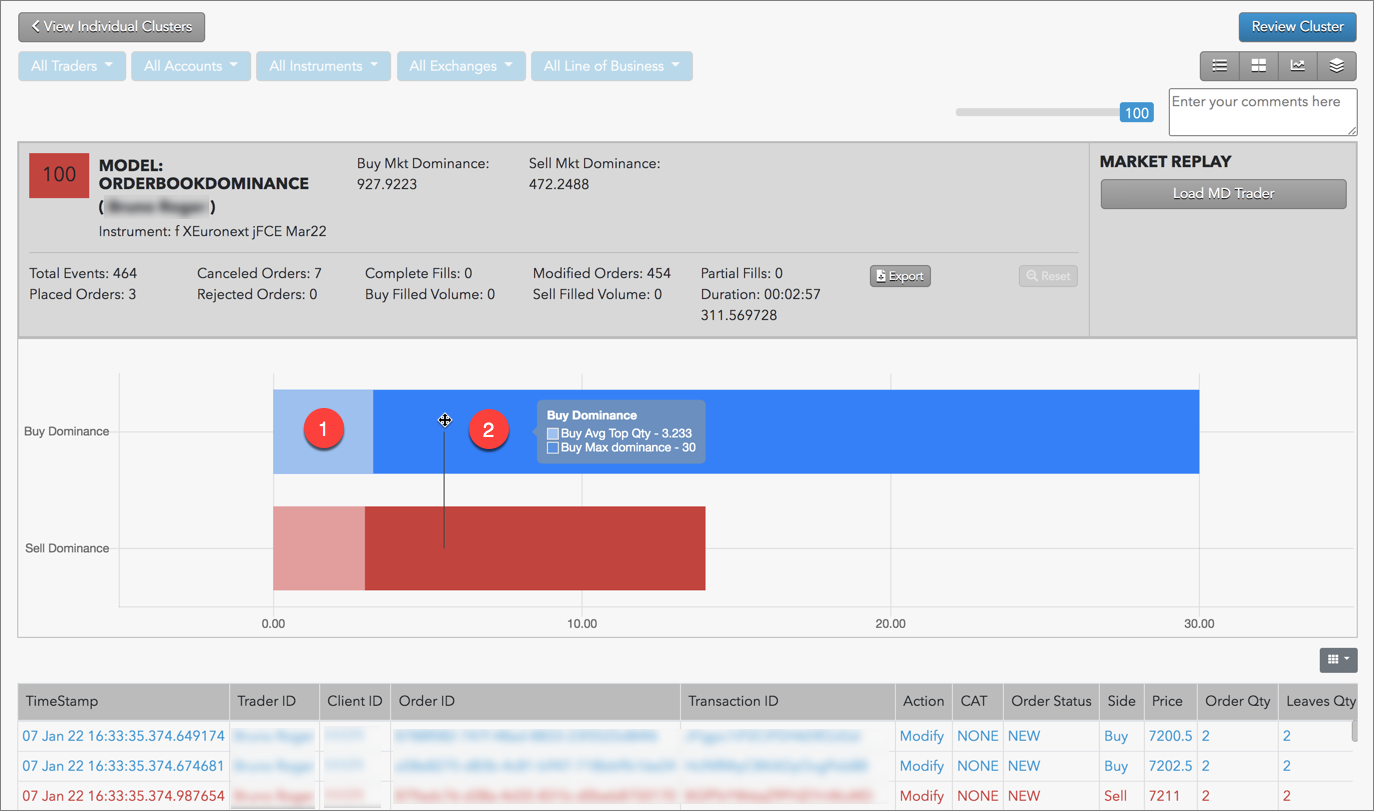Trading Behaviors Models
Order Book Dominance
Order Book Dominance occurs when a single trader's resting orders make up the majority of the disclosed volume of an instrument at different times during a trading session. The Order Book Dominance model in TT Trade Surveillance analyzes and scores clusters that may indicate that a single trader is dominating the total traded volume for an instrument during the session.
When a single trader's resting orders make up the majority of the disclosed volume for an instrument, they have control over the pricing of that instrument. The Order Book Dominance model can alert your firm to this behavior, which may be an indication of potential market manipulation.
Note: The Order Book Dominance model only identifies potentially suspicious trading behavior. This model does not necessarily reflect an actual rule violation.
Scoring methodology
TT Trade Surveillance computes a cluster score based on trading activity that has drawn regulatory attention in other situations.
Higher scores indicate the trading activity within a cluster is more likely to risk regulatory concern. A company's risk monitors can use these scores to prioritize resources for investing which users' trading activity poses the most regulatory risk.
Order Book Dominance score interpretation
The Order Book dominance model finds instances where the trader has more than a certain percentage of the disclosed volume from the top 5 or 10 price levels for an instrument.
Each cluster is assigned a risk score on a sliding scale between 0-100. This score represents the probability that Order Book dominance occurred during the duration of the cluster's trading activity.
Based on TT Trade Surveillance best practices, clusters that score over 75 are deemed to be “high risk” and should be the primary focus of users during their compliance reviews.
Order Book Dominance scorecard metrics
The Scorecard Metrics section measures the following statistics related to session dominance:
- Buy Mkt Dominance — Total traded Buy volume for an instrument during the session.
- Sell Mkt Dominance — Total traded Sell volume for an instrument during the session.
Identifying Order Book Dominance
Using the Cluster Scorecard, you can view the details of the activity that triggered the session dominance score.

For example:
- The Buy Avg Top Qty shows that the average quantity of the top five price levels was "5". The average quantity is represented by the lightly shaded portion of the bar graph.
- The Buy Max dominance metric shows a traded volume of "25", which dominated the Buy side volume for the instrument. The dark shaded portion of the graph represents Buy Market Dominance.